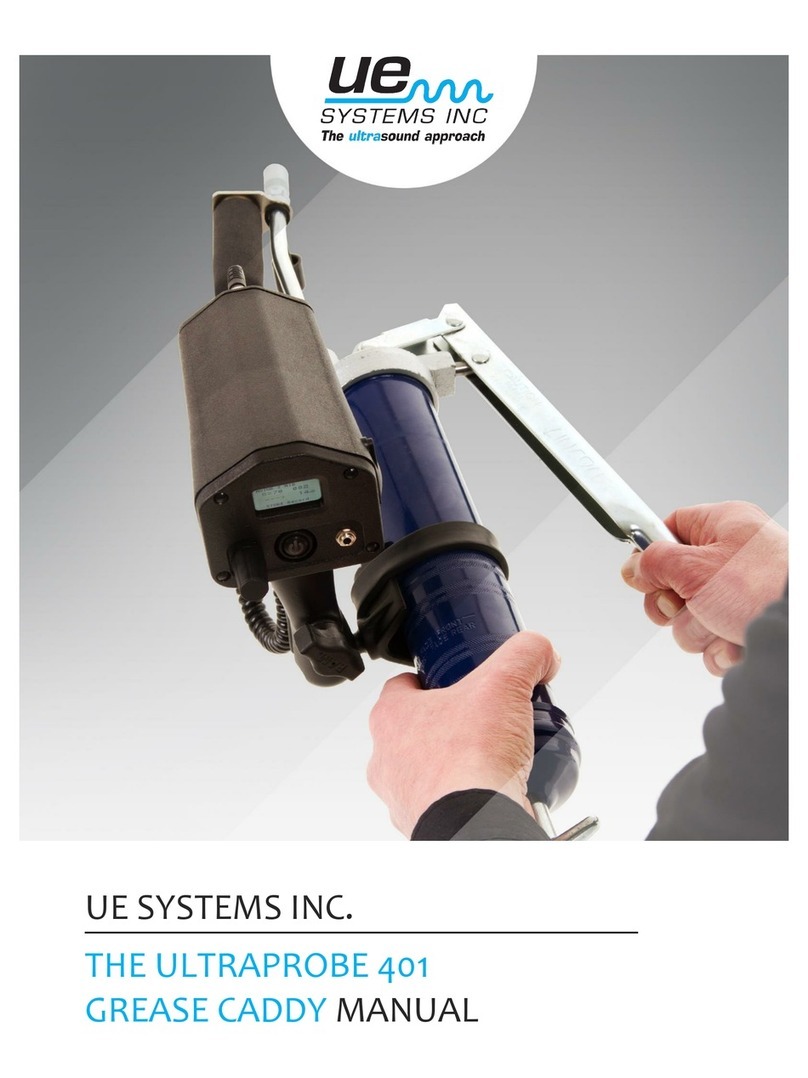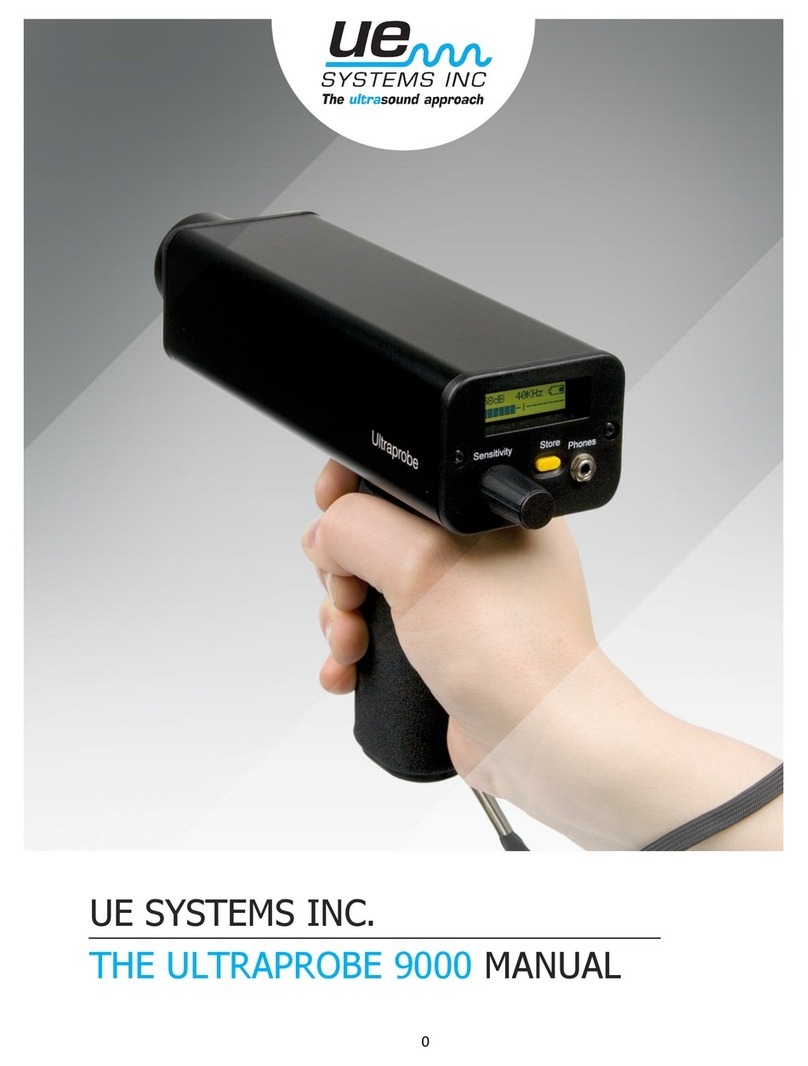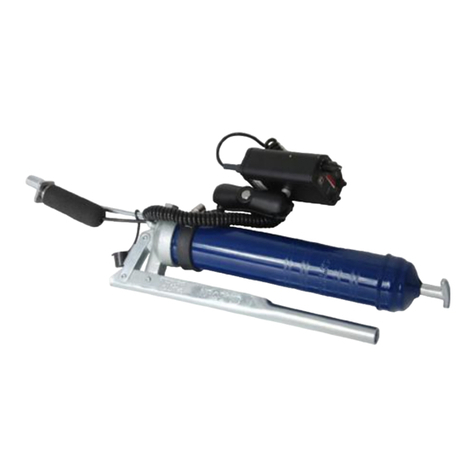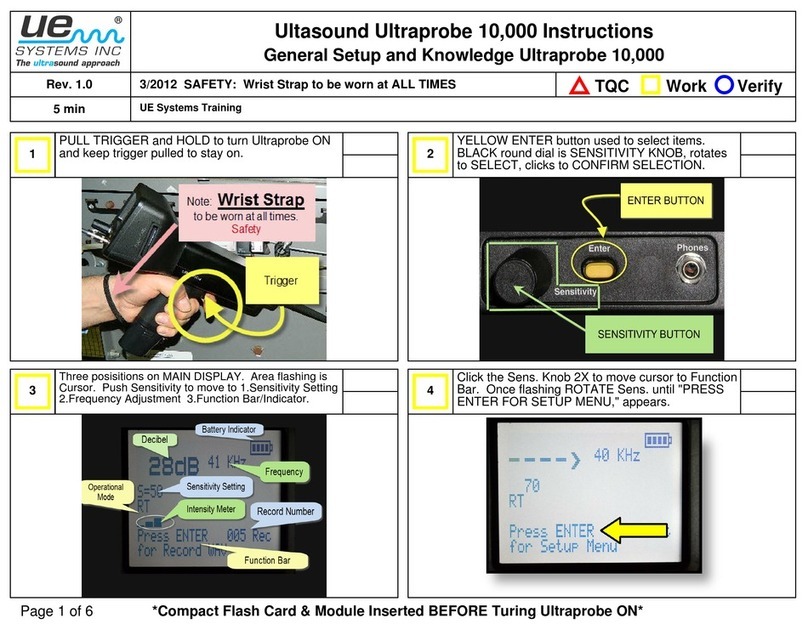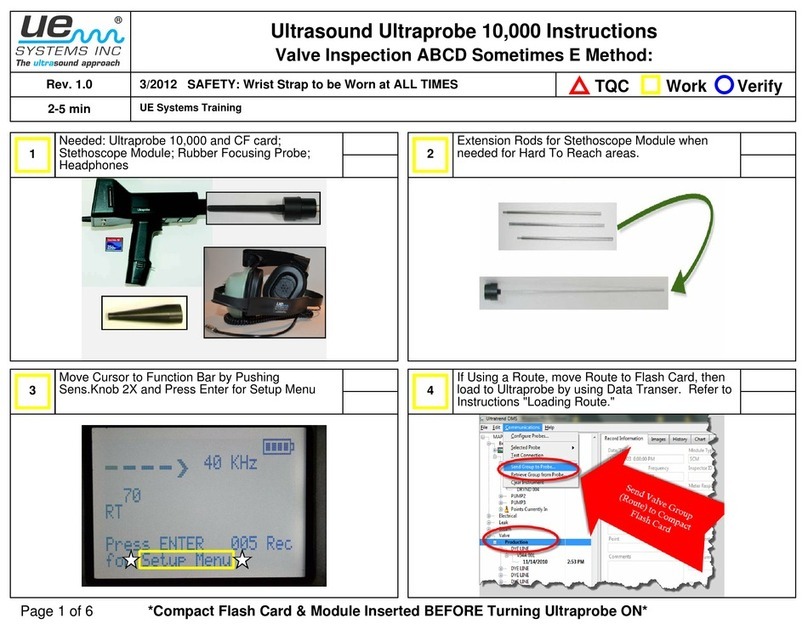Version 1 9
EVALUATING WAVE FILES TO DETERMINE THE SEVERITY OF THE
ULTRASONIC EMISSIONS
We are often asked at which voltages and on what type of equipment is ultrasound most effective. The
answer is not simple since it often depends on the individual asking the question. First of all,
determining the definition of low, mid and high voltages is relative. Those in the power distribution
arena will look at 12 kV as low voltage, those who work in a typical manufacturing plant will look on
440 Volts as high voltage. The main electric problems detected ultrasonically are partial discharge,
arcing, tracking and corona. Ultrasound detects the ionization of air, as it produces turbulence. This
can be from Corona, Tracking or Arcing. Heat is produced when there is either Resistance due to
corrosion or from Tracking and Arcing. Since Heat is produced by the flow of current through
corrosion or resistance, you can have a “hot spot” detectable with IR, and have no Ultrasound
because there would be no ionization.
Low voltages
The main concern in low voltage equipment is arcing. Typically 110, 220 and 440-volt systems are
inspected with infrared imaging and/or spot radiometers for temperature changes. Hot spots, usually
an indication of resistance, can be indicative of a potential for equipment failure or it could indicate a
possible fire hazard. When arcing occurs, it is often accompanied by heat. However, it is not always
possible to detect a hot spot if the equipment is covered. Ultrasound will hear arcing in circuit
breakers, switches, contacts and relays. In most instances, a quick scan of a door seal or vent will
detect the ultrasound emission. Listening for internal arcing in circuit breakers and switches can be
accomplished with the contact probe. For example, touch a circuit breaker switch with the contact
probe to listen for internally generated arcing. Remember to use caution whenever using the contact
probe. Be sure you do not touch any surface that can conduct electricity. The most effective method
of low voltage inspection will be to combine infrared imaging with an ultrasonic probe. Please keep in
mind that since air cannot be a conductor of electricity below 1000 volts, corona cannot exist. Any
“buzzing” sounds are either loose components vibrating at 60 (or 50) Hz or tracking.
Mid and High Voltage inspection
Higher voltages often produce more potential for equipment outage. Problems such as arcing,
destructive corona or tracking (sometimes referred to as "baby arcing") as well as partial discharges
and mechanical looseness all produce detectable ultrasound that warn of impending failure. Detecting
these emissions is relatively easy with ultrasound. The acoustic difference among these potentially
destructive events is the sound pattern. Arcing produces erratic bursts, with sudden starts and stops of
energy, while corona is a steady "buzzing" sound. Destructive corona has a build up and drop-off of
energy resulting in a buzzing sound accompanied by subtle popping noises.
If the subject equipment is at a distance while scanning for these emissions, use a parabolic reflector
such as the UE UWC (Ultrasonic Wave Form concentrator) or the UE LRM (Long Range Module).
These accessories more than double the detection distance of the standard scanning modules.
Partial discharge (PD) which occurs inside electrical components such as in transformers and
insulated buss bars, is another problem that can be detected with ultrasound. Partial discharge can be
quite destructive. It is effected by and causes deterioration of insulation. This is heard as a
combination of buzzing and popping noises. The contact probe is employed for PD detection. Again,
when using this probe exercise caution. If your Ultraprobe has frequency tuning, try 20 kHz. To learn
more about our Ultrasonic Wave Form Concentrator and our Long Range Module, visit our website:
http://www.uesystems.eu
